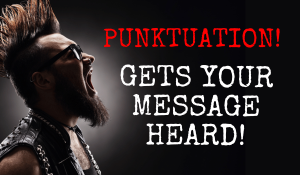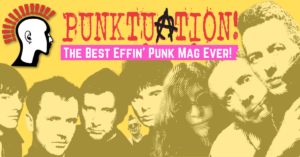There are few things that embody the DIY, have-a-go spirit of punk more than ‘zines. Although not by any means exclusive to the punk scene, they are an intrinsic part of the genre’s history. Molly Tie takes a look at the evolution of the craft and the role it has played in the history of punk.
Punks did not invent the ‘zine; the DIY fan magazine has, in fact, been going for quite some time. If you allow some flexibility in defining a ‘zine and include any kind of amateur press, then political pamphlets and leaflets have been going for hundreds of years. It is only recently (in the grand scheme of history) that we have come to know them as ‘zines’. But what actually are they?
The word ‘zine typically refers to any self-published, cheap/free publication (typically a magazine-style format) that has a small circulation (although this is not always the case) and often covers one particular topic, for example, music, TV, political causes etc.
Zines have played a huge part in various subcultures over the years, providing access to information as well as an opportunity to build a community for what might be relatively niche interests.
Printing methods and technology have obviously developed over the years, going from mimeographs (no, me neither) to xerography, inkjet printing, laser printing and now digital printing. I’m sure that in 15 years, we will be able to just ‘think’ about what we want on a page, and it will instantly manifest (no more printer paper jams!).
The first modern use of ‘zines were in the science fiction fandom, as far back as the 1930s, with the first ‘zine being The Comet published in 1930. These publications were originally called fanzines which eventually got shortened to ‘zines; the term can be traced back to 1940 in a science fiction fanzine by Russ Chauvenet.

Sci-fi and horror were popular topics throughout the ’40s, ’50s and ’60s, with writers such as Isaac Asimov cutting his writing chops by writing for fanzines (decades later, Simpsons creator Matt Groening would hone his craft with a ‘zine called Life In Hell). Popular titles include Spockanalia (about Star Trek, but I reckon you knew that), Horrors of the Screen, Journal of Frankenstein and Gore Creatures.
The Punk Zine Explosion
The punk scene exploding in the 1970s was a fortuitous bit of timing, as this was a time when there was an increase in the type of technological gizmos that made the process of producing your own mags less laborious. Copy shops gave the public access to photocopying for a relatively low price, which made producing a big stack of your own creations pretty easy. They were ready to distribute in short timescales. And they needed to be turned around sharpish to keep up with everything that was going on.
Those early days of punk saw the emergence of a few legendary titles that helped create a community and share information about this new genre of music and the new bands spreading it around. Sniffin’ Glue was a monthly ‘zine dedicated to punk, started by Mark Perry in 1976.

Although its run was short-lived (it was wrapped up in 1977), its circulation climbed up to the thousands and started the career of people like Danny Baker. For those consumers, Sniffin’ Glue was one of the very few ways to get information about a scene that was expanding rapidly. Where were the gigs? Who were the decent new bands? Where can we read interviews with punk musicians, the likes the mainstream press won’t touch?
If you needed answers to these questions, ‘zines were there for you. They embodied everything the punk scene stood for doing things yourself, keeping things low cost, reacting quickly to the changing nature of vibrant youth culture and showing that the scene can be relatively self-sufficient – it doesn’t need big companies or outsiders to keep it going. Just like the music, you can create for yourself and your peers without waiting for formal qualifications or anyone’s permission.
Other popular ’70s titles included:
–Bondage: put together by Shane MacGowan when he was 18 and chronicled the early days of the punk movement

–No Cure: focusing on the Berkshire and Oxfordshire post-punk scene, it covered punk, reggae and oi and featured interviews with Stiff Little Fingers and The Raincoats, to name a few.
Search and Destroy– An American ‘zine started in 1977 by V Vale and focused on the punk and new wave scene, focusing on local bands (Vale was based in San Francisco). The ‘zine ran for 2 years and published a total of 11 issues. It eventually morphed into a publishing company called RE/Search Publications that published several books on topics such as film, literature and sociology.
–Slash– Started in LA in 1976. It didn’t just focus on the surrounding California scene but covered various other alternative genres such as rockabilly, blues and reggae.

Also – Bored Stiff, 48 Thrills (the first issue featured writing on The Sex Pistols and The Clash); Punk, and Flipside.
’80s & ’90s Zines In The USA
During the 1980s, American Hardcore began blossoming into a thriving, energetic but challenging scene. Bands like Black Flag, Minor Threat, Bad Brains and The Dead Kennedys started their own punk ethos, developed under the shadow of Reaganomics and nuclear war.
American Hardcore had politics and philosophy at its heart, starting conversations (and writing songs) about what it means to be punk, be part of a community, and effect real-life change. And these debates didn’t just occur at gigs or in community gatherings- they were explored in the various ‘zines in the centre of the scene.
Maximum Rocknroll (MMR) is one of the most iconic publications of the American punk movement. What started as a punk radio show in California in the late 1970s eventually became the focal point of discussion on punk issues and made an early ‘influencer’ of founder Tim Yohannan.

Starting in 1982 and only wrapping up in 2019, MMR expanded to cover punk from all over the world. The ethics and intention of the punk scene, as well as defining certain terms like ‘punk’ itself, was just as much a part of the issues as the music, and it is this focus that has sometimes led to accusations that the ‘zine is elitist and quite insular.
Jello Biafra claimed that he was assaulted at punk venue the Gilman Street Project on May 7th 1994, an assault that left him hospitalised with serious injuries, because of the animosity stirred up against him by MMR.

Biafra, who held Maximumrocknroll indirectly responsible for the incident, claimed that his assailants were repeating allegations that he was a “rich rock star” made in a column that had recently appeared in the ‘zine.
So, whilst not everyone was a fan, Maximum Rocknroll is a great example of the developing purpose of punk ‘zines- now it is about defining the perimeters of the genre and engaging in debates about what punk (and punks) should stand for.
Other ‘zines included We Got Power (covering the early ’80s LA scene); My Rules (a photo ‘zine with photos taken at hardcore gigs); Dagger, and Profane Existence.
Feminist Zines
This dual-purpose for ‘zines- disseminating information about bands and records whilst also discussing political ideas- became even more obvious during the riot grrrl movement of the 1990s. Here, the intersection of music, politics and community became a driving force.
In many ways, riot grrrl was started by ‘zine culture- it certainly took the craft to its heart, and by 1993 it is estimated that there were 40,000 ‘zines circulating in North America (think of the poor postal workers). Riot grrrl punk emerged simultaneously as third-wave feminism when women and girls had a lot of thoughts and feelings about the world around them but nowhere to express it and no one to share it with. Enter ‘zines!

Feminism already has a strong history of using self-publication as a way of sharing radical ideas, and riot grrrl took that idea and ran with it. There were so many ‘zines being produced around this time, Erika Reinstein and May Summer founded Riot Grrrl Press to serve as a distribution framework to help zinesters get their work out there. Riot grrrl band Bratmobile started as a feminist fanzine called Girl Germs, created by Allison Wolfe and Molly Neuman.

The political mixed with the personal in riot grrrl ‘zines- it empowered many women to share their own personal experiences of body image, sexuality, men’s violence, and gender roles and expectations. There was also a thriving LGBT ‘zine scene allowing individuals to safely explore issues around their sexuality that they may not otherwise have felt safe discussing in other formats.
Popular riot grrrl ‘zines included Bust (now a publication with a large circulation), Shocking Pink, Bitch Magazine (still going now) and ROCKRGRL.
Dan Sinker’s Chicago-based zine Punk Planet (which ran 80 issues from 1994-2007) became beloved for its approach to writing about punk- as well as covering the music itself; the ‘zine covered many of the wider social issues that intersect with the punk philosophy including worker’s rights, feminism and the mainstream media.

Also featured were interviews with individuals and bands integral to the punk scene, such as Ian Mackaye and Sleater-Kinney. It was also well known for its review section, which, thanks to its policy of aiming to review every record it received, made up a significant proportion of each issue. You can find all issues here: Punk Planet Archive: Free Texts: Free Download, Borrow and Streaming: Internet Archive.
Absolutely Zippo followed the East Bay punk subculture since 1987 (it ended its run in 1998) and featured contributions from Lookout! head honcho Larry Livermore, Operation Ivy‘s Jesse Michaels and Green Day‘s Billie Joe Armstrong.

Is The Zine Dead?
Of course, with the rise of the internet and various home graphics and production software, it has become easier to create and find distribution for your self-made publication. Sites like ETSY and Big Cartel, as well as social media communities, make it easy to promote your wares. But on the flip side, perhaps the proliferation of the internet has meant demand for printed content has dwindled.
If you want to read interviews, find out gig details or get into a debate with a stranger about politics, you can do all this by surfing the web.
‘Zine fairs are still a thing, but it is perhaps not too controversial to say that these publications do not have the same role they did in previous years.

But that is not to underplay the role they have and still have to play in culture. It was part of the creative response to punk that went beyond just the music with some real tangible benefits for those trying to keep up with the scene and build friendships and allies along with their record collections.
Much like the approach to clothes and putting on shows, it was about what you could do for yourself. Part of the empowering message of punk has always been that you are capable of doing things- can’t find magazines you want to read? Make your own. Want to interview your favourite musician? Ask them. Have art, poems, opinions or thoughts you want to share? Share them.
On Line Zines
There are still ‘zines- many now digital, although as mentioned above, you can still go online and buy physical issues. Thanks to the ol’ internet, we now have thousands of ‘zines at our fingertips- many scanned in for posterity and covering scenes across the world.
From the ’70s and ’80s Dutch ‘zine archive found here: 70s & 80s Dutch Zine Archive – bacteria.nl, to Major Threat, a punk rock academia ‘zine found here: MAJOR THREAT – Home (punkrockacademia.com) to DIY Conspiracy and their more political writings found here: Do-It-Yourself Hardcore Punk Zine • DIY Conspiracy. All the punk knowledge we could ever need.
You should also check out Punk Girl Diaries – an online punk blog that also prints a quarterly ‘blog’ zine, that was launched to promote women in punk!
‘Zines have a cultural value in that they often capture information on a specific subculture or period of social history that the mainstream press cannot or will not capture. For this reason, there are often exhibitions of ‘zines in museums or archives in places like the British Library. And whilst there is an element of nostalgia in that, the attributes that ‘zine-making fostered are still as relevant and beneficial today as ever before. So, what are you waiting for? Get out some scissors and glue and start xerox-ing your way to punk history.
**You’re probably noticing that there is a whole treasure trove of ‘zines, particularly from those initial days of punk, that barely got a mention. To include them all and do them justice- we’d probably have to write a book. Only, we don’t have to because someone already has! Have a look at this great new book that will satisfy all of your punk ‘zine cravings: Eddie Piller and Steve Rowland – Punkzines – Paperback – Rough Trade
Need More Punk?
- Witch Fever: Everything’s better with a bucket of fake blood!
- State Champs Drop Catchy New Single Ahead of Their Pure Noise Tour
- Pennywise Frontman Jim Lindberg Shares New Single ‘The Palm of Your Hand’
- Peruvian Punks Las Ratapunks, mark Año de la Rata with new 7? EP single
- John E Vistic new album is set to erupt all over your turntable!
- John Lydon Calls Paul Cook and Steve Jones “filthy liars!” on Good Morning Britain today
- Album Review: The Stranglers – Dark Matters
- Wanna Own Johnny Ramone’s Guitar? It’s Yours For A Cool Half A Million!
- Never Mind The Price Tag
- Portrayal of Guilt release a charred, howling punk record
I’m Molly Tie- I Love punk! I play drums (badly), write a lot about punk (not as badly) and I’m particularly interested in issues relating to women in the music scene.




 Did you know that we are 100% DIY? We run our own game. No one dictates to us, and no one drives what we can or cannot put on our pages – and this is how we plan to continue!
Did you know that we are 100% DIY? We run our own game. No one dictates to us, and no one drives what we can or cannot put on our pages – and this is how we plan to continue!
